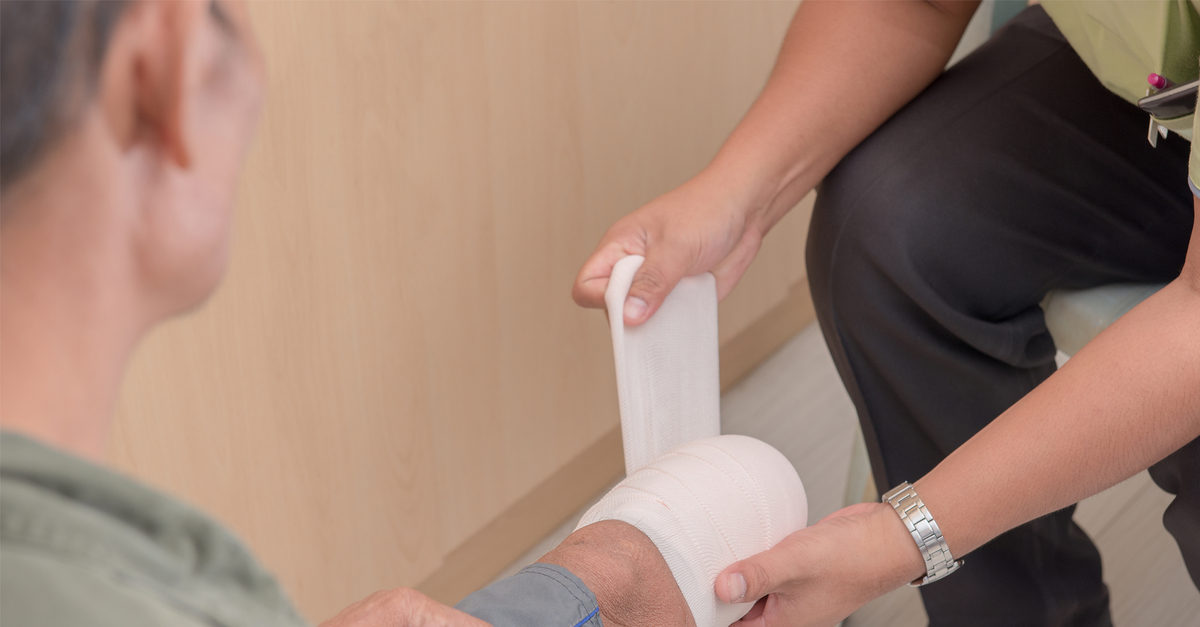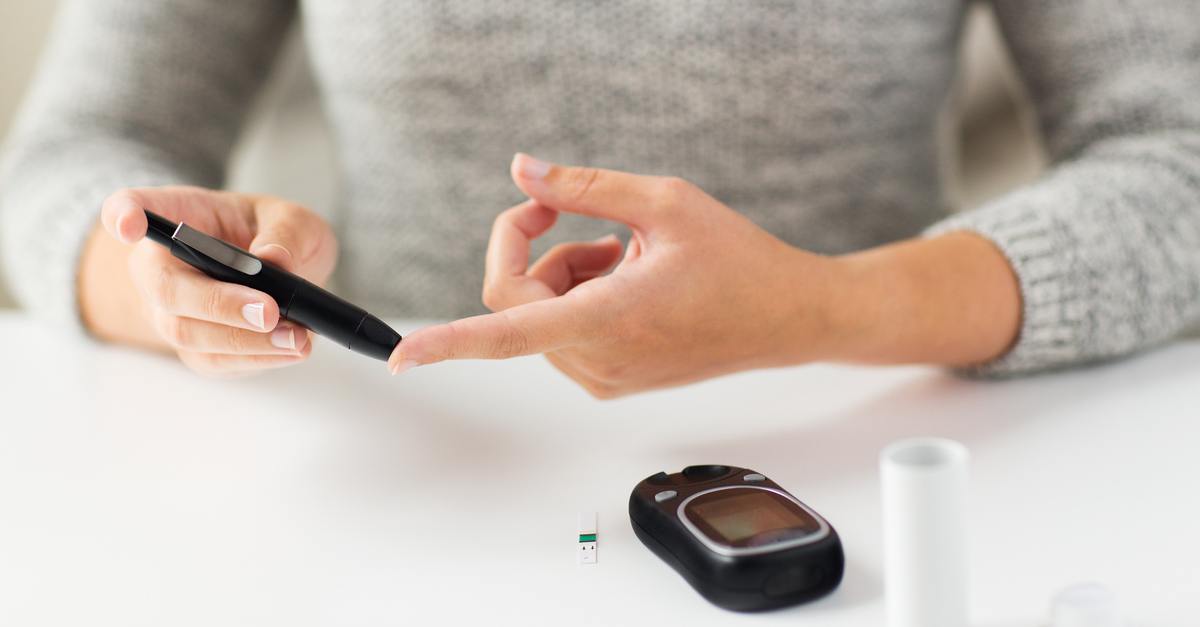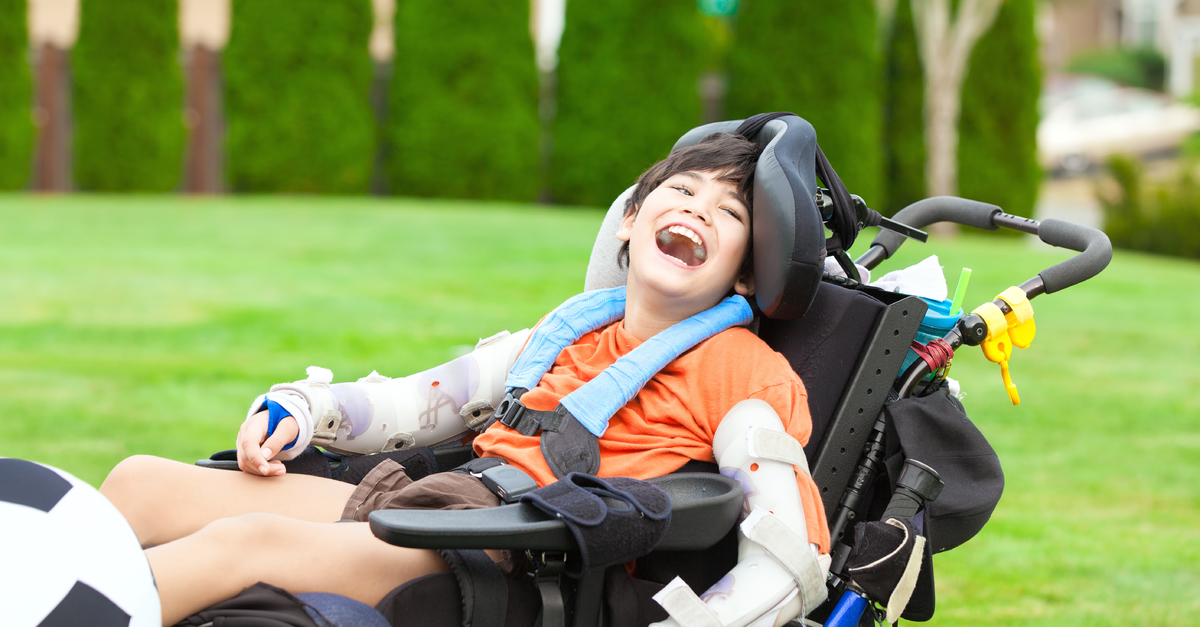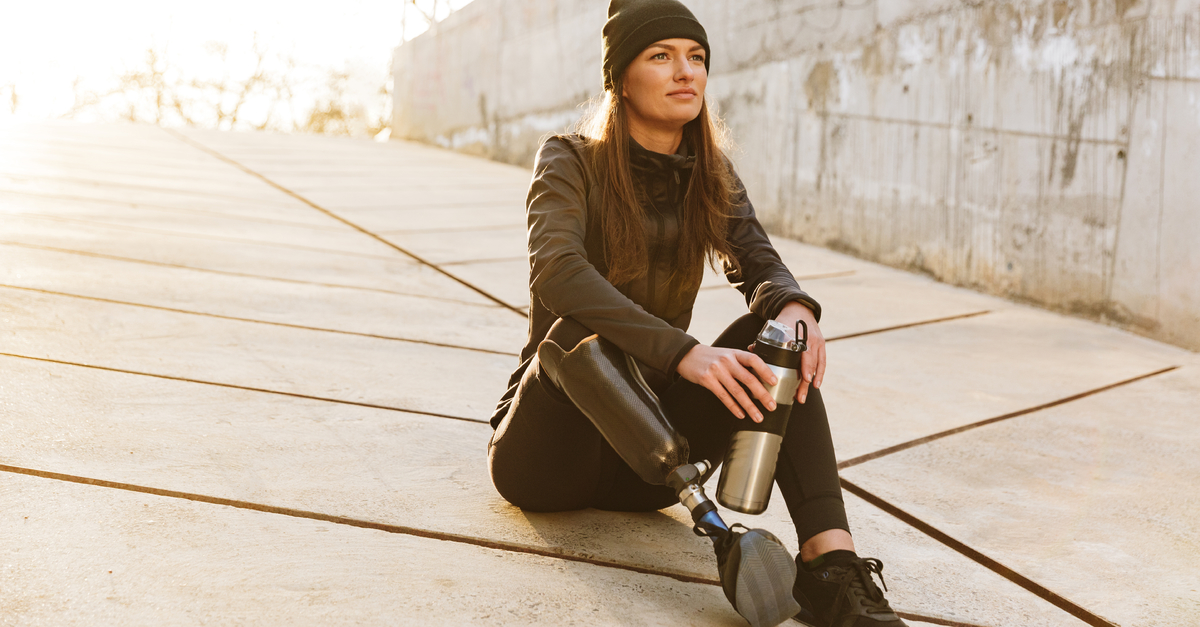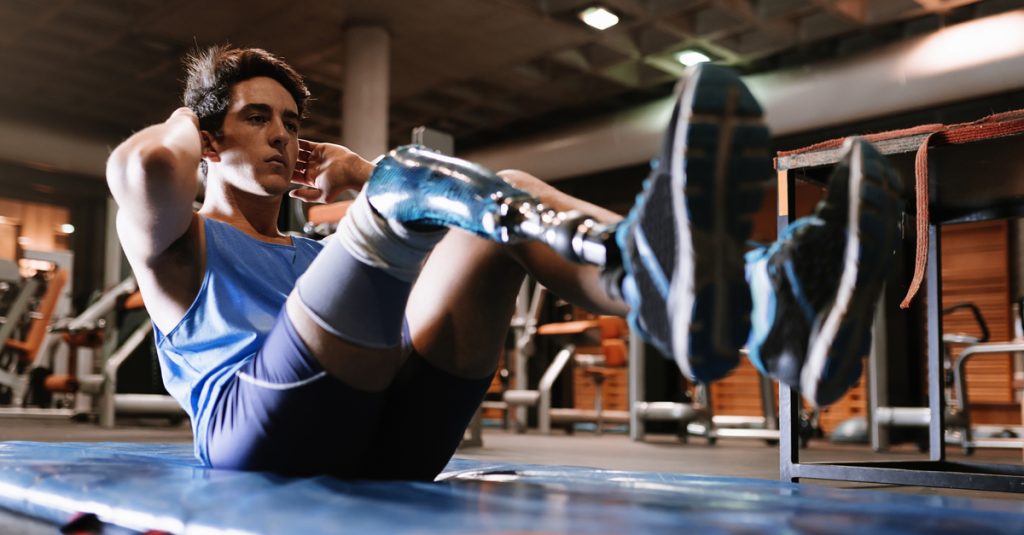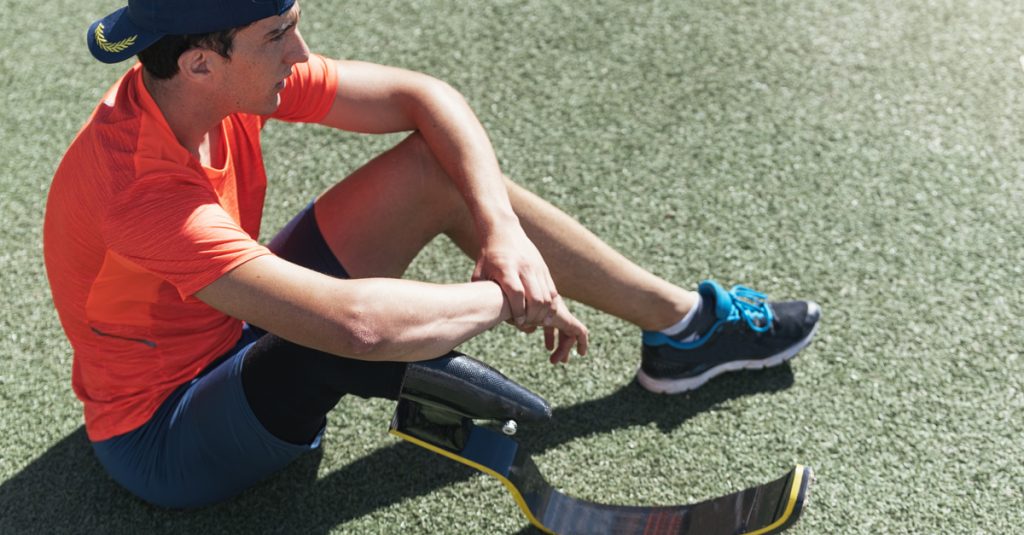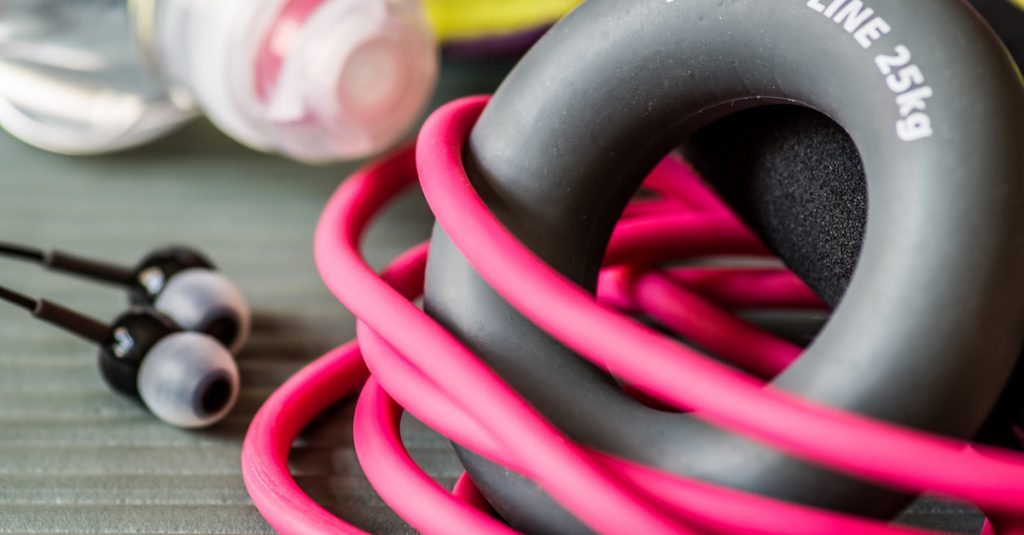In May of 2018, 69-year-old double amputee Xia Boyu reached the summit of Mount Everest from the Nepal side. His son, Cloud Xia documented the moment via the Chinese messaging platform WeChat. “My dad reached Everest at 8:26 Nepal time!!! Has realized his 40 years dream!!!” he said.
Previous Attempts
Xia lost both of his legs below the knee to frostbite after his first attempt to summit Mount Everest. He was 25 years old and lent his sleeping bag to a teammate. He tried again in 2014, but his trip was cancelled due to avalanches. His next attempt was cancelled because of the 7.8 earthquake that triggered even more avalanches. In 2016, he was 300 feet from the summit of the mountain when a blizzard forced him to retreat.
Reaching the Top
In December of 2017, the Napalese government attempted to reduce crowding on the mountain by banning certain groups of climbers, including disabled, blind, under 16 and solo climbers. A former Royal Gurkha Rifles soldier named Hari Budha Magar launched immediate legal action, claiming that this ban was a violation of the United Nations’ convention. The Supreme Court heard his plea and put the ban under temporary review. This was Xia’s chance to reach the world’s tallest peak. He told TIME magazine before his successful climb that he would fight for Mount Everest for his entire life.
He was guided by a veteran Napalese mountaineer named Mingma G. Sherpa, a man who has climbed the world’s 14 highest mountains. Eleven additional Sherpas, members of a group of mountain-dwellers from the area, provided support for the long journey.
New Zealand climber Mark Inglis was the first double amputee to ever summit Everest from the Tibet side in 2006, followed by Santiago Quintero from Ecuador in 2013. American single amputee Jeff Glasbrenner reached the top in 2017.
For tips, support and information contact BioTech today.
In general, phantom pain is described as pain that feels like it’s coming from a body part that’s no longer there. For a long time doctors believed that this was strictly a psychological problem, but it’s now accepted that these sensations are real and originate in the spinal cord and brain.
Most people who have had a limb removed say they’ve felt as if it’s still there, but this is called phantom limb sensation, and it doesn’t involve actual pain.
Symptoms and Characteristics
Typically you’ll feel the onset of phantom pain within the first week after amputation, but this can be delayed by months or longer, so don’t discount the possibility if you don’t feel it right away. The pain can be sporadic or continuous to be considered phantom pain, and can be described as shooting, cramping, crushing, throbbing, burning, or like pins and needles.
Causes
While the exact cause is still unclear, doctors have made many strides in determining how and why it happens. They noticed that during imaging scans, portions of the brain that had been neurologically connected to the nerves of the amputated limb show activity when the person feels phantom pain. Because of this, many experts believe that phantom pain is at least partially explained as a response to mixed signals from the brain. After amputation, areas of the spinal cord and brain lose input from the missing limb and adjust to this detachment in unpredictable ways. The result can trigger the body’s simplest signal that something isn’t right—pain.
Studies have also shown that after an amputation, the brain may readjust by remapping that part of the body’s sensory circuitry to another part of the body. Essentially this means that, because the amputated area is no longer able to receive sensory information, it’s rerouted. For example, if someone’s hand is amputated, the brain may redirect sensations to their cheek. If this person’s cheek is touched, it may feel like their missing hand is being touched. Because this is just another version of tangled sensory wires, this can manifest as pain.
Prevention
Not everyone who has an amputation develops phantom pain, but if you experienced pain in the limb before amputation you’re likely to have it after. This may be because the brain holds on to the memory of the pain, and continues sending the same signals after amputation. If you’ve experienced pain in the limb before amputation, some doctors recommend regional anesthesia—spinal or epidural—in the hours or days leading up to your amputation. This may reduce pain immediately following surgery, as well as reduce the risk of lasting phantom limb pain.
For more information on phantom pain and anything else concerning limb loss, contact Biotech today.
With the rise of diabetes awareness and proper diabetes knowledge, the rates of lower limb amputations have gone down more than 50% in the past 20 years. There are lots of precautions that you should be taking to protect yourself from diabetes limb loss.
More than 80% of amputations begin with foot ulcers. Nerve damage and poor blood circulation—side effects that can come with diabetes—make the feet more vulnerable to skin sores or ulcers. Starting with proper and diligent foot care is the best way to prevent further damage and possible amputation.
Preventing Foot Ulcers
The best way to avoid diabetes limb loss is to start with proper diabetes management—meaning a healthy diet, regular exercise, blood sugar monitoring, and taking your medications as prescribed. The next best way is to take care of your feet.
Inspect your feet daily, so that if something appears you know exactly when it started. Washing your feet daily should be a part of this inspection. Wash your feet with lukewarm water, dry them gently and use a pumice stone to gently remove dead skin wherever calluses tend to form. Sprinkle talcum powder of cornstarch between your toes to keep the skin dry, and moisturize the bottoms of your feet so the skin stays soft. Preventing cracks in your skin helps keep bacteria from getting in.
If you notice any calluses or other foot lesions, do not remove them yourself. Don’t use a nail file, nail clipper or scissors on calluses, corns, bunions or warts, and don’t use chemical wart remover. See your doctor or foot specialist instead, and they’ll know exactly how to handle it. Be careful when trimming your toenails—cut straight across and carefully file any sharp edges with an emery board.
Avoid going barefoot whenever you can! This can prevent injury to your feet, and keep them as clean as possible. Even just walking around the house, it’s recommended that you have shoes on. Wear clean dry socks as well—something made of cotton, special acrylic fibers, or anything that will pull sweat away from your feet. Avoid sock made of nylon, or any socks with tight elastic bands that may reduce the circulation in your feet.
Make sure your shoes fit properly, and have plenty of support for your heel, arch and the ball of your foot. You don’t want your toes too crowded, or shoes that irritate your skin. If your feet are different sizes, buy shoes for the larger one—it’s better that you have more room rather than less. Your doctor may even recommend specially designed shoes that will fit your feet exactly, ensuring maximum comfort and support.
Smoking impairs circulation significantly and reduces the amount of oxygen in your blood. If you have diabetes, you may already have poor circulation and smoking will only make it worse.
See your doctor regularly, at least once a year. Of course, if you notice anything abnormal on your feet, or you have an ulcer that isn’t healing, make an appointment right away. Some signs that you should call your doctor include ingrown toenails, swelling and redness, athlete’s foot, discolored skin, plantar warts, pain, or any ulcer that is bigger than ¾ inch or lasts more than one or two weeks.
For more information, contact BioTech today!
Every year, roughly 10,000 infants and preschool age children are diagnosed with cerebral palsy, a neurological disorder that can impact the motor skill, movement, and muscle tone of the child.
There is treatment for cerebral palsy, though, in the form of braces and orthotic devices that help kids with cerebral palsy move around better than they’d otherwise be able to. With the right device, it’s even possible for a kid to walk.
Here’s what families need to know about finding braces and orthotic devices for children who are impacted by cerebral palsy.
Getting the Right Type of Orthotic Device
There are two different types of orthotic device: accommodative and functional. Accommodative orthotic devices are essentially over-the-counter devices that are prefabricated. They do provide some moderate support, but they’re not designed with the individual patient in mind.
Functional devices, on the other hand, are custom-built for the patient and are designed to provide more support to the child’s biomechanics. These types of devices are the best form of mobility aids for kids with cerebral palsy.
Building the Best Device
Cerebral palsy orthotic devices and braces are made of a variety of materials, ranging from carbon fiber to hard plastic, metal, rubber, or some combination of materials. They can be built in a variety of configurations, such as for the foot, as an ankle-foot orthosis (AFO), a knee-ankle-foot orthosis (KAFO), or even a brace running from the feet all the way to the torso.
We build the best braces by first taking detailed measurements of our patients. Then, we fabricate a device with durable materials and adjust the device until it it is a proper fit. But, each device has to be adjusted as the patient grows, which means the family will come to depend on a caring and friendly orthotist who can ensure the device remains effective as the child ages.
With proper care from an orthotist and a physical therapist, it’s possible for children with cerebral palsy to gain independence, mobility, and a better quality of life.
BioTech designs and manufactures orthotic devices for children suffering from cerebral palsy. We treat every patient with compassion and respect, and we work hard to deliver superior service and prosthetic devices that change lives. Recognize your possibilities. Contact us today for more information.
We all want our babies to be perfectly healthy and normal, but sometimes, our babies have abnormally shaped skulls, either at birth or during infancy.
To treat these head shape deformities, parents can use baby helmet therapy. We’ve helped countless families of infants deal with deformities through baby helmet therapy and think it’s a very effective solution.
Here’s what baby helmet therapy is all about.
What Causes Head Shape Deformity
An infant’s skull is far from what it’s like as an adult or even an older child. It’s still growing and solidifying well after birth, and thus is vulnerable to outside forces or pressure that can make it change shape.
The most common cause of deformity is called positional plagiocephaly. This is basically a flat spot that appears on the side or back of a baby’s skull that is caused most often by how the baby lies during the first few months after birth.
A baby is at a higher risk of positional plagiocephaly if:
- The mother’s womb was abnormally shaped
- He or she shared the womb with a twin
- He or she was premature
- There have been delays in physical development that cause the baby to favor one side or one lying position
Just because your baby has a flat spot, though, doesn’t mean there’s a problem. You’ll have to talk to your child’s doctor to be sure. Repositioning your child on a regular basis when they nap or sleep is recommended and can alleviate the plagiocephaly.
There’s another cause of head shape deformity, although it is far less common: craniosynostosis. This condition is a birth defect in which one of the joints between the bones in the skull are prematurely fused. The brain continues to grow, which can result in a misshapen skull.
In this instance, cranial surgery is often required.
In both cases, baby helmet therapy can be an instrumental part of dealing with the deformity (after the operation in the case of craniosynostosis).
How Baby Helmet Therapy Works
Baby helmet therapy involves creating a helmet - or cranial orthosis - that remodels your infant’s skull as it grows over a period of time.
The baby helmet is made of lightweight plastic and foam and is custom-fitted to your infant’s skull. Your orthotist will take detailed 3D scans of the baby’s head in a quick, pain-free, non-invasive manner. We then take those measurements and use computer-aided design and computer-aided manufacturing to sculpt the helmet.
After it is properly fitted, the helmet will help protect the flat spot and gradually reshape the skull as it continues to grow. Your infant will need to be brought in periodically as he or she gets bigger so the helmet can be adjusted as needed.
Generally, cranial remodeling will begin between the ages of three months and 18 months and last for anywhere from four to six months on average. We recommend that the helmet be worn for 23 hours a day, with a one-hour break for rest and cleaning.
If the process is followed, baby helmet therapy can deliver great results.
Contact BioTech for more information about cranial remodeling and see if baby helmet therapy is appropriate for your child.
Limb loss isn’t as uncommon as people think. In fact, most people - even people with limb loss or their friends and families - would probably be surprised to learn just how common it is.
There are other limb loss statistics that are surprising to most people. Here, we’ve collected a few of the most eyebrow-raising stats related to limb loss in the United States.
There Are More Amputees Than You Think
If you were to ask yourselves how many people currently live with limb loss in the United States, you’d probably be off. That’s because there are over 330 million people in the U.S., and against such a big number, the number of people with limb loss can’t be that high, right?
Well, in reality, there are over 2.1 million people in the country who are living with limb loss today. That’s 0.63% of the population. There are 3.5 million truck drivers, for comparison’s sake, which equals 1.06%. Truck drivers seem to be everywhere, so just imagine that two out of every three truck drivers that you pass on the roads and highways every day are missing a limb. That should give you a better idea of just how many amputees there are in the country.
That number is expected to double by 2050, by the way, which is faster than the entire population will grow. Those with limb loss will account for 0.96 percent of the population by then.
How did that number get so high? Well, each year, 185,000 people go through an amputation. That works out to roughly 300 to 500 amputations every 24 hours, somewhere in the nation. The most common type of amputation? A below-knee amputation, which accounts for 71% of all dysvascular amputations.
Limb Loss Can Be Costly in Several Ways
Did you know that over their entire lifetime, it’ll cost more for those with limb loss than those without? Lifetime healthcare costs for an amputee is $509,275, on average, which is almost
$150,000 more than the lifetime cost for a person without limb loss.
Hospital charges for patients who undergo an amputation collectively totaled $8.7 billion in 2013, a number that has probably risen over the past few years. The collective cost to insurance, both public and private, is over $12 billion each year.
Limb loss isn’t just costly in a financial sense; it’s costly in a psychological sense, too. According to research, approximately 30% of people with limb loss suffer from depression, anxiety, or both. That’s compared to 18% of the adult population as a whole.
As a provider of care for those suffering from limb loss, we understand the gravity of the situation. Going through an amputation is a major life change. But, it’s not the beginning of the end; it’s the end of the beginning, and the beginning of your new phase of life.
The numbers can be daunting, but life with limb loss doesn’t have to be. With help and perseverance, you can live a normal life and regain the independence you once had.
BioTech designs and manufactures prosthetic devices for people suffering from limb loss. We treat every patient with compassion and respect, and we work hard to deliver superior service and prosthetic devices that change lives. Recognize your possibilities. Contact us today for more information.
In the field of competition, every successful team has a plan that keeps in mind various contingencies from unexpected injuries to the untimely bounce of the ball, so they can emerge victorious even against the toughest opponents.
For those experiencing the loss of a limb, having a game plan for amputee rehabilitation can usher in the process of a new beginning in life.
Before embarking on a successful journey, there are two primary keys to victory are critical regarding successful amputee rehabilitation.
Amputee Rehabilitation Support Team
No successful game plan can be executed without a team acting as one, and it is no different for those undergoing amputee rehabilitations.
Going through an amputation can be a challenging process physically and emotionally but having a loyal group of supporters can make a big difference. The patient’s support team can include anyone from family, friends, a personal physician, and a prosthetist to a physical therapist.
One of the most crucial components of your support team is the physical therapist.
Across America, just a small number of physical therapists specialize in amputee rehabilitation. This is where the patient’s support group along with the services of local hospitals and therapy clinics can greatly assist the patient in deciding which physical therapist is a great fit for them.
Top Notch Physical Therapy
Just as an athletic team needs talented players to win big, a highly talented and capable physical therapist is essential to championship level amputee rehabilitation.
Although the goal of every physical therapist is to provide the best possible care while doing the least amount of harm and getting the patient to function at full capacity, a highly skilled physical therapist can be the difference maker in elevating the level of care for the patient.
A physical therapist can assist the amputee with various aspects of rehabilitation including getting in and out of bed, using a wheelchair, managing pain and preparing the amputee’s body for the use of a prosthesis.
High quality care from a physical therapist can boost the morale of the amputee and provide an important puzzle piece to coming out victorious in amputee rehabilitation.
BioTech designs and manufactures prosthetic limbs for people suffering from limb loss. We treat every patient with compassion and respect, and work hard to deliver superior service and prosthetic devices that change lives. Recognize your possibilities. Contact us today for more information.
A child’s first prosthesis is a big milestone in their life. There’s a lot that comes with it: learning how to master something that may be difficult at first; the emotional turmoil that may come with having to wear a prosthesis; the response your child will get from others.
Parents can really help their children in these times to better cope with their prosthetic device and learn how to wear one well - both physically and emotionally.
Here are things you should cover with your child to help them adjust to the idea of wearing a prosthesis moving forward.
Teach Them Basic Care
A child can better cope with wearing a prosthesis if they are taught how to care for it. Indeed, learning to care for a prosthetic device can make the child more accepting of it - especially for younger children.
Basic care includes cleaning the liner, when and where to remove the prosthesis, how to keep the device away from water, sunscreen, bug spray, and other substances that may harm it, and the importance of resting their residual limb as needed.
For older children, you can also teach them sock management, which helps them get more acquainted with the routine they’ll develop to care for the device.
Talk Honestly With Them
A lot of honest conversations are necessary if your child is going to adjust in a healthy way.
The younger the child, the more accepting they will generally be toward the device. Very young children, such as toddlers, may be more curious than anything. You should still speak only positively about the device to them, and don’t treat them as different. They will, after all, follow your lead with how to deal with the device just like they do on everything else.
For school-age children, how other children respond to the device will be a big concern. You can’t control what other kids say or do, but you can help your child deal with all types of responses, and maintain positive self-esteem in the process. Let them know that other kids may not approve, but that speaks more to their character than the character of your child.
For teens, body image issues will usually emerge. Speak honestly about them and the insecurity they may feel. Let them vent their concerns, and listen to them without trying to change their mind. Help them come to terms with the prosthesis as a new part of their lifestyle and positively reinforce them at all times.
Get Them In Touch with Others in the Limb Loss Community
Community is such an important part of adapting to any major life change, such as limb loss.
There are others out there just like your child who have gone through a wide gamut of experiences. Their insight - and friendship - will be invaluable to your child. It can be something as simple as letting your toddler or young child play with other amputees. For older children, getting them in touch with peers or older mentors will be a major boon.
Life isn’t over when you lose a limb, and that’s a key message you’ll need to impart to your child. Follow these steps and your child will be better for it.
BioTech designs and manufactures prosthetic devices for people suffering from limb loss. We treat every patient with compassion and respect, and work hard to deliver superior service and prosthetic devices that change lives. Recognize your possibilities. Contact us today for more information.
We’re in the thick of sports season, and from now through the end of spring, our kids will be hitting the fields and courts in full force.
If one of your children wears a prosthesis, playing sports brings additional challenges beyond the typical ones facing amputees with an artificial limb. But with a few tips, your athlete can take care of his or her prosthesis and perform like a champ.
Keep the Prosthesis Clean and Dry
Sports and moisture have a long relationship. Sometimes you’re caught out in the open on the field during a downpour. And no matter what the weather, playing sports always delivers another type of moisture: sweat.
It’s important that your child keep their prosthesis clean and dry. You don’t want bacteria to spread, and you want the integrity of the prosthesis and everything that goes with it to stay strong.
Keep the external surfaces of the prosthesis dry. Be sure to clean the inner components, like socks and liners, after every event. Use warm water and soap, and finish by spraying it down with an alcohol-based cleaner.
If your child gets into the habit of cleaning his or her prosthesis after practice, exercise, or a game, it’ll be a lot easier to care for the artificial limb.
Inspect the Prosthesis after Every Outing
Sports can be rough. A prosthesis is vulnerable to sudden contact as well as the usual wear and tear of being worn, which is accelerated during a rough-and-tumble event.
Make sure your child inspects their prosthesis after every practice or game. Look for loose or warped components. Be vigilant for any motor function that appears sluggish, such as if a joint isn’t allowing full movement. Check for cracks, too, and listen carefully for any unusual noise.
If something abnormal appears, tell your prosthetist so it can be checked out and repaired if necessary.
Care for the Residual Limb
Caring for a prosthesis doesn’t extend to just the device itself; it also means taking care of the residual limb.
Playing sports puts a lot of pressure on the residual limb and causes friction and contact between it and the prosthesis in new ways beyond what you get just by walking. This friction can cause irritation that can easily result in sores and blisters if you’re not careful.
Talk to your prosthetist about lotions and gels that may be appropriate to reduce this friction. And wash the residual limb with antibacterial soap after every session or game. You don’t want your athlete to get an infection.
Follow these tips and your child will be playing like a champion all throughout the season.
BioTech designs and manufactures prosthetic limbs for people suffering from limb loss. We treat every patient with compassion and respect, and work hard to deliver superior service and prosthetic devices that change lives. Recognize your possibilities. Contact us today for more information.
Double leg amputees often feel like they can’t live a normal life after their surgeries.
But with today’s technology, these amputees can live a full life - which includes exercising.
Exercising has a ton of benefits for amputees. Some of these benefits - a stronger heart, more energy, a higher metabolism - are the same for everybody. But for amputees, it’s also very important to build up muscular strength in your residual limbs and core to help you move around normally.
Here are two ways for double leg amputees to build up strength and increase mobility - while also dealing with pain and other negative emotions.
Use Resistance Bands to Get Started
You don’t have to jump right into a full-scale workout to start seeing progress.
If you’re a beginner, start with resistance bands. Begin with one leg and alternate with the other as you use the resistance bands to steadily push and pull on your leg muscles, which will strengthen them.
Place more attention on your weaker limb, because it’ll need more exercise to get it to the level of your stronger limb.
This PDF from the Amputee Coalition provides examples of exercises you can do with a resistance band. Even the exercises that don’t use bands can easily be turned into resistance band exercises.
Resistance bands aren’t just for beginners, though; you can get a good workout by using progressively stronger bands as you work your way up.
Try Yoga as a Way to Stay Fit and Focused
Yoga is a great form of exercise that has a lot of benefits for the body - and mind. Doing yoga can help you feel more relaxed and focused while also developing your body - and it’s something you can do, even with double-leg amputation.
One yoga provider created a handy PDF for how leg amputees can do yoga to build up their bodies.
You can also use yoga as a form of pain management. Studies have shown that doing yoga strengthens the size of the insula and the prefrontal lobe in your brain, which creates a strong connection between emotions and cognitive thoughts. This means that as you focus your mind during yoga, you’re actually helping the brain become less sensitive to pain and the emotions that come with it.
BioTech designs and manufactures prosthetic limbs for people suffering from limb loss. We treat every patient with compassion and respect, and work hard to deliver superior service and prosthetic devices that change lives. Recognize your possibilities. Contact us today for more information.

